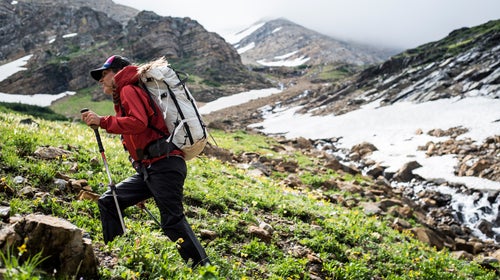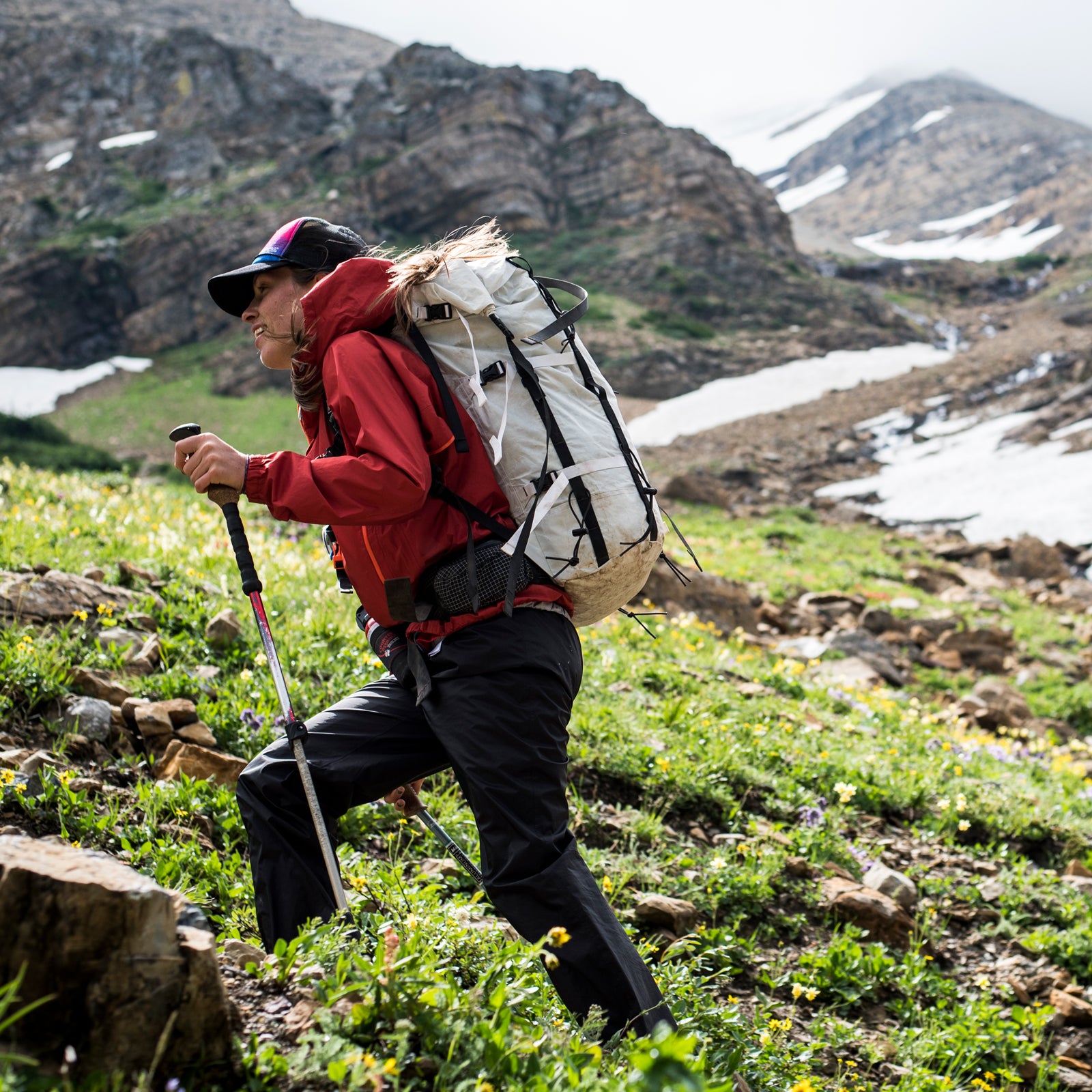Hiking pants are an essential piece of any outdoor kit: they╠řdefend your legs against weather, UV rays, and╠řmany╠řnatural hazards. Some can even serve double duty as acceptable business-casual wear (at least╠řin some offices). But a good pair can be hard to find. This is especially true for women, since there are so many variables at play: leg length, hip width, thigh-muscle circumference, butt size. Whether you are short or tall, petite or plus-size, you probably have a very specific list of criteria╠řwhen╠řyou look for╠řpants.
So we set out to find the best hiking pants for women, for a variety of weather conditions and body types. Over three months, six women and I tested more than 30 pairs from 24 brands. In the process, we logged close to a thousand miles on trails spanning the globe from South America to Asia.
How We Tested the Best Hiking Pants for Women
Our testers were all avid hikers, running the gamut of body shapes and sizesÔÇötall, petite, lean, muscular, curvy. We ranged in age from 25 to 59 years old. Among us were several gear writers, a photographer, an actor, and a couple professional guides. We weathered storms and waded through knee-deep mud puddles in Patagonia, climbed through waterfalls in the Sierra Nevada, baked under the Jordanian sun, biked and hiked our way across the Mongolian steppe, and soaked up rainforest humidity in Peru.
Best Do-It-All Pants
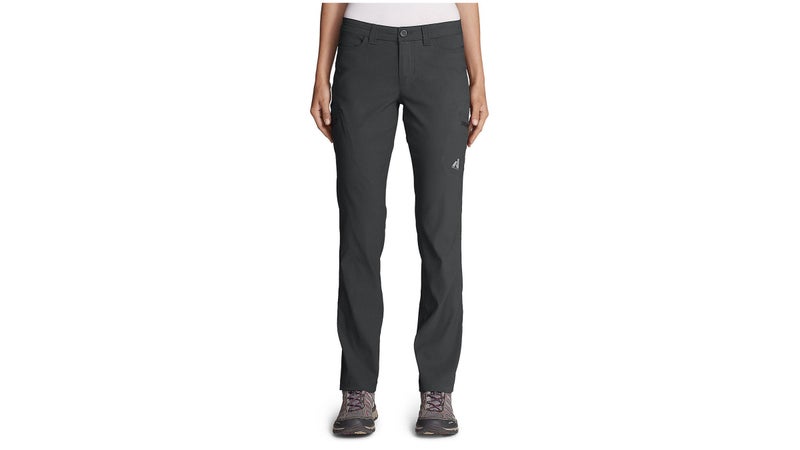
Eddie Bauer Guide Pro╠ř($80)
Pros: TheyÔÇÖre water- and dirt-resistant and come in many inseam lengths.
Cons: The logo is prominent, and the color fades over time.
These are not only great for hiking╠řbut also for climbing, bike riding, lounging next to╠řa campfire, and even╠řwandering around╠řtown. TheyÔÇÖre made from a stretchy nylon-spandex fabric thatÔÇÖs super lightweight, wonÔÇÖt turn frumpy after days of continual wear, and offers╠řUPF 50+ sun protection.
A durable water-repellent (DWR) treatment means they shed rain as well as dirt and slop. Case in point: one tester accidentally dumped an entire plate of hummus all over her lap in Jordan. It washed right out with a hotel-bathtub laundry session, and the pants were dry again soon after.
Another thing the Guide Pro gets right is pockets. Hip and cargo pockets can drastically alter the fit or aesthetics of hiking pants; while theyÔÇÖre useful for carrying such essentials as lip balm, money, or your phone, they can ruin a flattering, trim silhouette. The Guide Pro╠řfeatures laser-cut seams that lay flat against your leg for a more streamlined look. (Though╠řwe wish the pockets╠řwere deep enough to fit an iPhone.)╠řIf it werenÔÇÖt for the prominent First Ascent logo on the thigh, which screams ÔÇťoutdoors only,ÔÇŁ weÔÇÖd give these a ten out of ten for aesthetics.
But these pants didnÔÇÖt seize the top spot because of looks and performance alone: Eddie Bauer makes them in a crazy amount of sizes (0 to 24W) and inseam lengths (29 to 35 inches). Nearly everyone will be able to find a great╠řfit. For this reason, the Guide Pro beat out our runner-up, the stylish ($80). We loved the FerrosiÔÇÖs lightweight ripstop fabric and seven neutral color choices, but the 31-inch inseam came up short for our long-legged testers.
Best Lightweight Pants
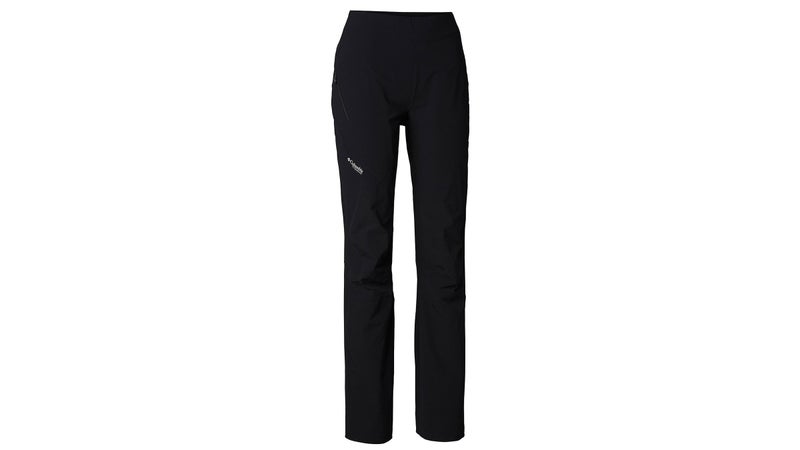
Columbia Featherweight Hike ($80)
Pros: TheyÔÇÖre lightweight, quick drying, and have an elastic waistband.
Cons:╠řThe ultralight fabric abrades╠řmore readily.
These are so feathery╠řthat╠řwearing them feels like wearing nothing at allÔÇöperfect for hot, humid weather, when you still want coverage and SPF 50+ protection without sweating uncontrollably. Our testers wore them on multiple sweltering, muddy hikes to explore╠řthe Incan ruins of Peru and were thankful that they dry in a flash.
In terms of features, everything about these pants is designed with simplicity and clean╠řlines in mind. To achieve a trim aesthetic, Columbia opted to forgo the cargo pockets that are so common on hiking pants. Instead, two unobtrusive zippered hand pockets offer enough storage for small essentials like lip balm while lying flat against the thigh for minimal bulk.
That design approach extends to the waistband. In place of the standard button fly and belt loops, Columbia used wide, flat elastic that╠řavoids the need for a belt altogether (and eliminates the muffin top that so often results from ill-fitting pants). This affords╠řall-day comfort, especially when wearing a heavy pack. Our only gripe: we would love to see the Featherweight available in different inseam lengths and more colors.
The barely there feel and super stretch of the fabric gave them a notch╠řover the ($130),╠řour runner-up in this╠řcategory. We loved the CrestonÔÇÖs lightweight fabric and minimalist look╠řbut found it╠řslightly less stretchy. Those seeking a lightweight pant with features like belt loops and side pockets should look here, while those who prize simplicity and freedom of movement should turn╠řto the Featherweight.
Best Wet-Weather Pants
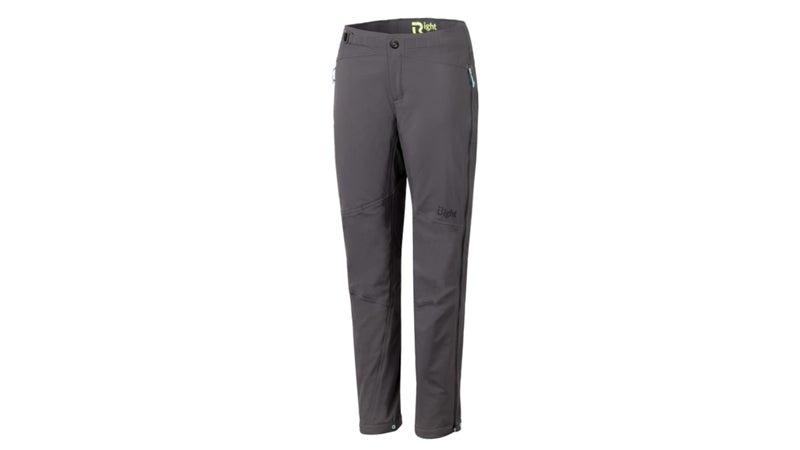
Bight Gear NeoShell Nuker ($299)
Pros:╠řThey have an integrated waist adjustment, a minimalist aesthetic, and are extremely breathable while offering full-weather protection.
Cons: They have no pockets, and the DWR needs to be reapplied over time.╠řTheyÔÇÖre also pricey.
Sideways rain, hail, snow, relentless wind, knee-deep mud: these pants can handle it all. Normally, locations with consistently variable weather, like the Pacific Northwest, require raingear that you constantly take on and off to avoid marinating yourself from the inside out. The ╠řdoes away with that annoyance. TheyÔÇÖre╠řmade from Polartec NeoShell, an air-permeable fabric thatÔÇÖs extremely breathable yet fully waterproof.
Traditional waterproof-breathable fabrics require high temperature and humidity to actually allow moisture vapor to escape through the membrane. But Polartec claims that its NeoShell fabric╠řallows a small amount of air through the membrane in order for your bodyÔÇÖs heat and sweat to escape before itÔÇÖs turned to vapor. Put simply,╠řitÔÇÖs better at regulating your body temperature. And best of all, the soft-shell-like fabric is quiet.
As a result, these pants are incredibly versatile. Throw on a base layer╠řfor alpine climbing or cold-weather hiking, and ditch it when the temperatures╠řclimb (we found them╠řcomfortable up to around 65 degrees).╠řThe slimness of the pant legs╠řmeans thereÔÇÖs no╠řextra fabric in which╠řmud, rain, or snow might╠řpool. Bight also added grommets at the cuff for do-it-yourself elastic-cord stirrups that╠řkeep the pants in place over your boot laces, which is great if, like me, you hate wearing gaiters.
With no pockets, the Nuker╠řcaters to minimalists. One feature that does make a difference is╠řa low-profile elastic waist belt for hassle-free adjustment.
The seven-eighths-length side zips are useful for removing the pants over boots, but weÔÇÖd love to see two-way zippers instead, for more adjustable venting. As a comparison, we appreciated the hidden vent zips on the water-resistant ($159), the runner-up in this category. If you plan to hike in more temperate climes that see only occasional rainfall, these would make a fantastic╠řalternative.
Best Pants for Tall and Short People
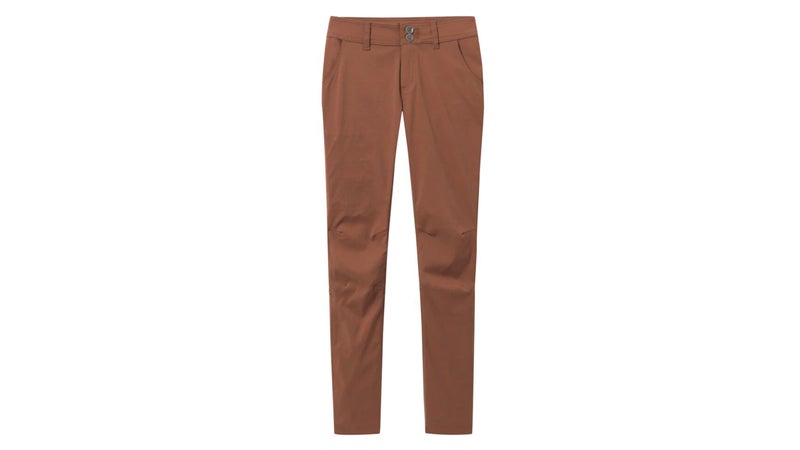
Prana Halle Straight╠ř($89)
Pros: TheyÔÇÖre extremely stretchy,╠řquick drying, and have an integrated waist adjustment. They also come in multiple inseam lengths.
Cons: The pockets are shallow, and the waist runs loose.
When youÔÇÖre shorter or taller than average, finding a pair of hiking pants that fit╠řproperly can be difficult. Thankfully, a few brands let you choose from a variety of lengths. Our favorite in this category is the , which comes in inseams ranging from 28 to 36 inches.
All of our testers agreed that one of the HalleÔÇÖs best features is the adjustable drawcord, which helped avoid the dreaded waist gap. (This is especially key╠řin stretchy hiking pants, since fit can change╠řfrom day to day, and even╠řhour to hour, when youÔÇÖre on the trail.) The pants also roll up to the knee and secure with a snap closure, ideal for╠řriver crossings, warm-weather days, and biking around town.
TheyÔÇÖre made from PranaÔÇÖs Stretch Zion fabric, a nylon-spandex blend thatÔÇÖs treated with a DWR finish to help fend off moisture and dirt. From a wet spring hike to Vernal Falls in Yosemite to a rainy outing in the UKÔÇÖs Lake District National Park, our testers were impressed with how quickly the pants dried out on the trail. This is what gave the Halle an edge over our runner-up, the╠ř ($90), which also comes in a variety of inseam lengths. While crazy comfortable, the soft cotton-elastane fabric is not water-resistant and takes longer to dry. The North Dome is ideally suited for climbing, fair-weather hiking, or even travel and office life.
What to Look For in Hiking Pants
The models we tested are all marketed as hiking pants, but these days we expect a little more versatility from our apparel. Choosing the right pair starts with identifying how youÔÇÖre going to use them. If you are planning a thru-hike, you may want pants that dry quickly and can convert into shorts on hot days. If you do a lot of traveling, climbing, or biking, you might want a pair that serves double duty. Here are some general things to consider.
Fabric
As a rule, you want fabric thatÔÇÖs highly breathable, quick drying, and water-resistant, as well as something╠řthat╠řsheds dirt easily. The pants should be light enough so you donÔÇÖt overheat when working hard, but they should also protect you╠řif the weather turns south or youÔÇÖre╠řhiking through rough terrain. If youÔÇÖre╠řheaded to cold, snowy, or particularly windy and rainy climes, youÔÇÖll want to consider soft-shell pants, which are more protective than simple DWR-treated nylon.
Features
At their most basic, pants are supposed╠řto protect your legs. But there are plenty of details that can change how a pair functions. The feature╠řthat varies╠řmost widely between pants is╠řpockets, in particular the╠řnumber, size, and placement of them. Some have large cargo pockets, some have small and╠řslim pockets, and some forgo storage altogether in favor of a minimalist design. YouÔÇÖll also want to decide how stretchy you like your pants, what kind of waistband you prefer╠ř(elastic? something with a╠řbuilt-in, adjustable belt? or belt loops?), and whether you want a pair╠řthatÔÇÖll convert into shorts or cross over into other sports.
Fit
Perhaps the most difficult thing to assess is fit. But there are a few objective measures that can help you narrow things down. Built-in waist belts or drawstrings╠řor elasticized╠řwaistbands╠řcan all help you fine-tune fit.╠řIf youÔÇÖre tall or short, look for pants that come with╠řmultiple inseam-length options. The ability to adjust the cuffs with a drawstring cinch is an added bonus for short hikers. Fortunately, most companies have begun to give women a wider variety of options to suit preference and body type.
